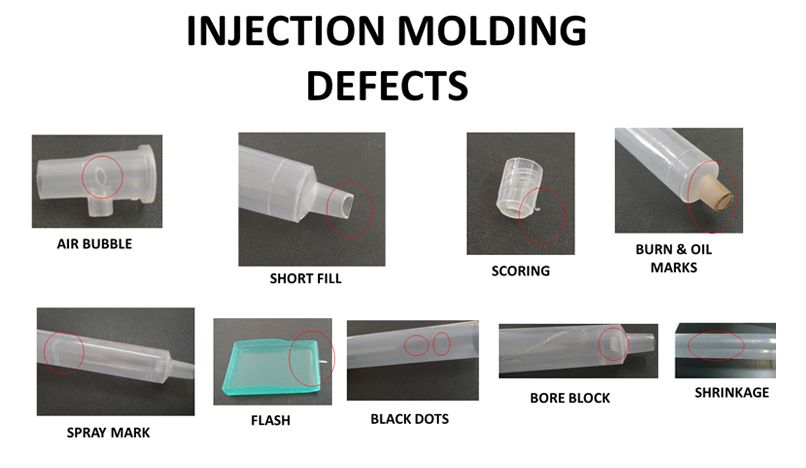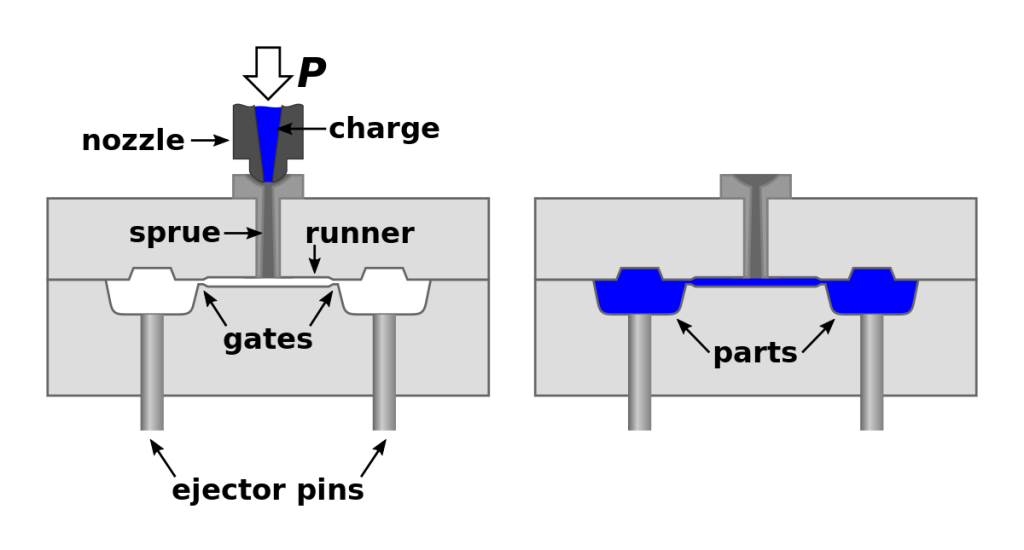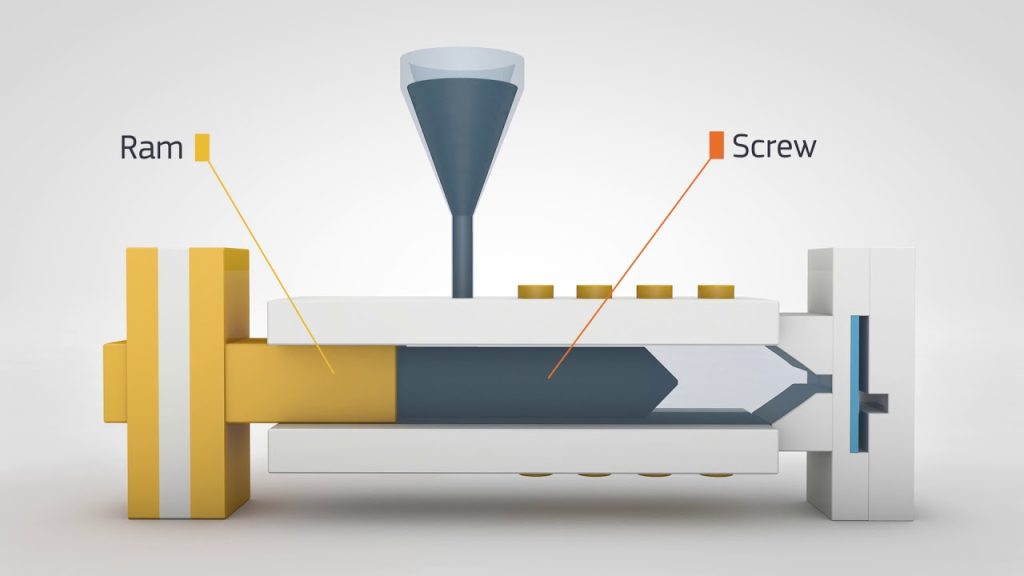As consumers, we often come across plastic products that are smooth, perfectly shaped, and identical to one another. Have you ever wondered how these products are made? Well, there’s a good chance that they were injection molded. Injection molding is a manufacturing process used to create parts and products that are identical in size, shape, and texture, making it an ideal method for mass production. But how can you tell if something has been injection molded? Let’s find out.
From toys to automotive parts, injection molding is used to make a wide range of products. The process involves injecting molten plastic into a mold cavity and allowing it to cool and solidify. The result is a product that is free of imperfections and has a uniform texture. So, whether you’re a consumer or a manufacturer, knowing how to spot an injection molded product can be a useful skill. In this article, we’ll explore some of the telltale signs that indicate a product has been injection molded.
If you’re wondering whether a product is injection molded, there are a few telltale signs to look for. First, check for uniformity in the material, as injection molding creates consistent parts. Next, look for any visible injection points, which may appear as small circles or protrusions. Finally, check for any parting lines, which are marks left by the mold. If the product exhibits all of these characteristics, it is likely injection molded.
How to Tell if Something is Injection Molded?
Are you trying to identify whether an object is injection molded or not? Injection molding is a popular manufacturing process that produces high-quality and reliable plastic products. In this article, we will discuss how you can tell if something is injection molded.
What is Injection Molding?
Injection molding is a manufacturing process that involves melting plastic pellets and injecting them into a mold. The plastic then cools and solidifies, taking the shape of the mold. Injection molding is used to produce a wide range of plastic products, from small components to large structures.
Benefits of Injection Molding
There are several benefits of using injection molding to produce plastic products. Some of these benefits include:
– High production rates
– Consistent quality
– Low labor costs
– Design flexibility
– Material versatility
How to Identify Injection Molded Products?
Here are some ways to tell if a product has been injection molded:
1. Look for parting lines: Injection molded products will have a visible line where the two halves of the mold meet. This line is known as the parting line.
2. Check for gate marks: Injection molded products will have a small mark where the molten plastic was injected into the mold. This mark is known as the gate mark.
3. Inspect the surface: Injection molded products will have a smooth and consistent surface. The finish will be uniform and free from imperfections.
Injection Molding vs Other Manufacturing Processes
Injection molding is not the only way to produce plastic products. Other manufacturing processes include blow molding, rotational molding, and thermoforming. Here are some differences between injection molding and other processes:
– Blow molding produces hollow products, while injection molding produces solid products.
– Rotational molding is used to produce large, hollow products with complex shapes.
– Thermoforming is used to produce thin plastic products, such as packaging and disposable containers.
Advantages of Injection Molding over Other Processes
While other manufacturing processes have their advantages, injection molding is often the preferred choice for producing plastic products. Some of the advantages of injection molding over other processes include:
– High production rates
– Consistent quality
– Design flexibility
– Cost-effectiveness for high-volume production
Conclusion
Injection molding is a popular manufacturing process for producing high-quality plastic products. Identifying whether a product has been injection molded can help you understand its properties and limitations. By looking for parting lines, gate marks, and inspecting the surface, you can tell if a product has been injection molded. Injection molding offers several benefits over other manufacturing processes, including high production rates, consistent quality, and design flexibility.
Frequently Asked Questions
Are you wondering whether a product is injection molded or not? Here are some common questions and answers to help you determine if a product is injection molded.
What is injection molding?
Injection molding is a manufacturing process that involves injecting molten material into a mold cavity. The molten material then cools and solidifies, forming the desired shape. This process is commonly used to produce plastic parts, but it can also be used for metal, glass, and other materials.
Injection molding is a highly versatile process that can produce complex shapes with high accuracy and consistency. It is also a cost-effective way to produce large quantities of parts, making it a popular choice in many industries.
How can you tell if something is injection molded?
There are a few ways to tell if a product is injection molded. One way is to look for parting lines or ejector marks on the surface of the product. These are caused by the mold separating into two or more pieces, or by ejector pins pushing the part out of the mold.
You can also look for uniformity in the product’s shape and size. Injection molding produces parts with high consistency, so if a product has consistent dimensions and no visible defects, it is likely injection molded.
What are the advantages of injection molding?
Injection molding has several advantages over other manufacturing processes. One advantage is the ability to produce complex shapes with high accuracy and consistency. This is because the molten material is injected into a mold cavity under high pressure, which ensures that every detail of the mold is replicated in the final product.
Another advantage is the ability to produce large quantities of parts at a low cost per unit. Injection molding is highly automated, which means that once the mold is set up, the process can run continuously with minimal supervision. This makes it a cost-effective way to produce high volumes of parts.
What are the limitations of injection molding?
While injection molding is a highly versatile process, there are some limitations to what it can produce. For example, it can be difficult to mold parts with very thin walls or complex geometries. It can also be challenging to mold parts with undercuts or internal threads.
Another limitation is the cost of tooling. Injection molds are typically made from steel or aluminum and can be expensive to produce. This means that injection molding is most cost-effective for large production runs, where the cost of tooling can be amortized over many parts.
What are some common applications of injection molding?
Injection molding is used in a wide variety of industries and applications. Some common applications include automotive parts, consumer products, medical devices, and electronics.
Examples of products that are commonly injection molded include plastic toys, computer keyboards, automotive dashboards, and medical syringes. Injection molding is also used to produce components for appliances, sporting goods, and packaging materials.
In conclusion, there are a few key factors to consider when determining if something has been injection molded. First, look for uniformity in the plastic material. Injection molding produces consistent and even parts, whereas other manufacturing processes may result in irregularities. Additionally, inspect the part for any visible injection points or seams, which are telltale signs of injection molding.
It’s also important to consider the complexity of the part. Injection molding is ideal for producing intricate parts with high levels of detail. If you’re examining a part with a lot of intricate features, it’s likely that it was injection molded.
Finally, consider the volume of production. Injection molding is a highly efficient process that can produce large quantities of parts quickly and consistently. If you’re examining a high volume of parts with consistent quality, there’s a good chance that they were produced using injection molding.
By keeping these factors in mind, you can quickly and easily determine whether something has been injection molded. Whether you’re a manufacturer or a consumer, understanding the manufacturing processes behind the products you use can help you make more informed decisions and appreciate the care and precision that goes into their creation.
Request a quote today!
[contact-form-7 id="1578" title="Contact form"]
Please compress the file into a ZIP or RAR file before uploading. Alternatively, send through your RFQ by email.
enquires@unitymanufacture.com





